#britain 2006
Explore tagged Tumblr posts
Text



British Royal Family - Prince William of Wales and Catherine Middleton leaving Boujis nightclub, London, Britain | September 07, 2006
#royaltyedit#the royals and i#theroyalsandi#prince william#prince william of wales#catherine middleton#kate middleton#wk dating#wk dating 2006#wk boujis 2006#wk edit#wk edit 2006#wk edit sep 2006#sep 2006#2006#boujis 2006#britain 2006#britain edit#britain edit 2006#british royal family#my edit
218 notes
·
View notes
Text
The Real Deal
Silverstone, 11 June 2006. With England in the grip of World Cup fever, the crowd for the British Grand Prix is expected to be down on recent years. There is little likelihood of any home success in the main event. Still, the stands and spectator banks are starting to fill up slowly as the GP2 race starts at 9 AM. Lewis Hamilton has started down in eighth place, but he is working his way through the field with characteristic aggressive driving. He is soon closing on the squabble for second place. Brazil's Nelson Piquet, Jr. and the Monegasque driver Clivio Piccione go through Copse side by side at around 140 mph, but, as they accelerate out of the corner, they are suddenly three wide as Hamilton draws alongside. Into the five sweeping bends that make up the daunting Becketts complex they go, with Piquet on the inside. Hamilton carries huge momentum around the outside of the first left-hander to claim the racing line and second place as the road goes right then left again; Piquet drives straight through a temporary advertising hoarding. The cheers from the crowd are by far the loudest of the weekend as the young driver, then known only to hardcore petrolheads, picks off the leader and cruises to victory. Unknown he no longer is: 'Lewis Hamilton + Silverstone' is now one of the most popular searches on YouTube. Had Britain's latest sporting hero-in-waiting heard the excitement of the crowd? "I didn't, no," he said afterwards. "It all went silent at that point because we were so close, and I don't know if my body was preparing for something. You know when, if you're going to crash, your body gets ready to protect itself? I felt my body and the adrenaline all building up ready for something, and when I came out it all relaxed, kind of saying, "Phew, thank God for that.'" "I'm working my arse off," he continued, "not only to do the best job possible, but also to get that seat at McLaren. I really want that. It's an opportunity not many people get. If I can get that seat then I think - and I feel very confident - that I can make best use of it.'
A little under a year later, Hamilton not only has that seat at McLaren but, when we meet soon after his second place in the Spanish Grand Prix in Barcelona, he is leading the Formula One drivers' championship. Today, however, he is back doing the unseen graft of testing. Along with the other 10 teams that contest the world championship, McLaren have moved on from Barcelona to the Paul Ricard circuit near Marseille in the south of France. The former home of the French Grand Prix is now simply a test track, albeit about the most sophisticated in the world - as you would expect from a facility owned by Bernie Ecclestone, the billionaire ringmaster of Formula One. Everything is of the highest standard and, just as the proprietor would like, the team vehicles are lined up so precisely they would do justice to the contents of David Beckham's fridge.
At the back of a grey McLaren bus, sheltered from the warm Mistral wind, sits Lewis Hamilton. It is 12 hours since testing began and he has driven 98 laps, posted the fastest time by more than a second and been through a two-and-a-half-hour debrief with his engineers. For a short while he is alone, staring at a computer screen with a diagram of the circuit and a screed of data on it. Not all his work is at 190mph and in front of 140,000 people.
After the excitement of a grand prix, testing must seem like a chore. Does it make him a better racer?
'I don't think so,' he says, preparing to close the laptop. 'You get that crafting from karting, the wheel-to-wheel racing you have there.' Karting is where most successful racing drivers first turn a wheel in anger; the competition is ferocious.
'The more racing you do the more you learn,' Hamilton continues. 'I'm a racer naturally, so that's why I believe I'm good in the races. In the race it's all about consistency, and to get consistency you need to learn about the car and that comes from testing. But the test is mainly to build your awareness of what is around you, that you are understanding the car and to fine tune the car and yourself. Sometimes I don't make any changes to the car and I find half a second in myself. Some people find it really difficult, like the engineers, they say, "What can we do?" and I say, "Don't do anything. I quite like the car as it is, I just need to improve myself."'
Hamilton is seeking to improve skills that have seen him make a record-breaking start to his F1 career. He finished third in his first race, the Australian Grand Prix, then second in Malaysia and Bahrain - a record run on the podium for a rookie, which he extended in Spain to become the youngest driver to lead the world championship.
At last Sunday's Monaco Grand Prix, Hamilton finished second yet again, this time behind his McLaren team-mate, double world champion Fernando Alonso. But there were signs of frustration from the young Englishman at a victory missed, as he slipped to second in the title race. Hamilton was called in for his first pit stop earlier than he expected, just as he was preparing to put in some really quick laps to extend his advantage over Alonso, who had already stopped.
'I was actually quite surprised because I was fuelled to do five laps, maybe six laps, longer than Fernando and they stopped me with three laps to go,' Hamilton said after the race. 'There wasn't much time to pull out a gap or improve my time; I wasn't really given much time for it. I came in two or three laps after him [Alonso]. That was unfortunate, but that's the way it goes. I've got number two on my car, I am the number two driver, it is something I have to live with.'
McLaren's team principal, Ron Dennis, rebutted allegations of team orders and race manipulation, strictly against F1 rules since 2002 when Ferrari instructed Rubens Barrichello to allow Michael Schumacher past to win the Austrian Grand Prix. 'We are scrupulously fair at all times in how we run this grand prix team,' he said. 'We will never favour one driver, no matter who it is. We don't have team orders, we had a strategy to win this race. There will be places where they will be absolutely free to race, but this isn't one of them.'
That last line attracted the attention of the FIA, the sport's governing body, who started investigating 'incidents' concerning the McLaren team during the race.
Since his debut in Melbourne on 18 March, Hamilton has transformed the popularity of grand-prix racing, not least because he is young, British, good looking and thrillingly fast. He is also mixed race in a sport that is overwhelmingly white; inevitably, he has been compared with Tiger Woods. 'I've never seen a rookie as good as him,' says Damon Hill. 'Nobody has. He's coped with everything he's faced. He's been superb.'
Triple world champion Sir Jackie Stewart is equally impressed. 'I think Lewis is going to rewrite the book,' he said recently. 'We'll see a new generation of what I call properly prepared, professional racing drivers. I'm talking about fully rounded; [Michael] Schumacher became that, but even Schumacher wasn't as good as he should have been, not in terms of the driving but the total package. I believe Lewis will create the benchmark for a whole generation of drivers. Niki Lauda and James Hunt changed the culture of racing drivers, but they weren't role models. They said nothing, didn't give a damn. Lewis Hamilton can become a role model.'
Even the unflappable Bernie Ecclestone is excited by Hamilton. 'He's got a lot of talent,' he says. 'The guy's a winner. It became clear pretty quickly that he will win a grand prix some time - sooner rather than later. He'll win the championship - but I don't think this year. It would be asking a bit much and be a lot of pressure to expect that. It would be fantastic if he did, but I don't think we should talk about that at this stage.'
It is impossible when meeting Hamilton not <to be impressed or struck by just how young and fresh-faced he is, even when dressed up in McLaren T-shirt and jacket. He is courteous, intelligent, engaged and never loses eye contact, even if you sense that, as we talk, he would rather be getting on with some hardcore data analysis. He speaks of his time on the practice circuit with relish. 'It is quite satisfying when you go out and you know that you needed to brake 10 metres later … building up the courage to brake those 10 metres later, not lock up the tyres, and really pull it off. Sometimes you go into a corner and you think, "I'm not going to make it," but you say, "OK, we're going to do it." And you do it and you think, "Shoot, what was the big fuss in the first place," but you think about the advantage you've gained when you exit the corner - you're like, "Yeah, that was good." It's an amazing feeling.'
A grand-prix team can take more than 100 personnel to a race and that doesn't include the test team who work away from the public gaze. Hamilton is eager to acknowledge that there are others who contribute to his success. 'Sometimes you don't even notice the changes the engineer has made,' he says. 'My engineer is so smart and he understands what I say and the way I communicate - that's a great feeling. When someone understands what you're talking about and is able to translate that into your car, it runs better.'
Hamilton has been supported by McLaren since Ron Dennis recruited him into the team's driver development programme as a 13-year-old in 1998. The team contributed as much as £5m to his career, and offered technical support and advice as he worked his way up to the junior formulas. He graduated to racing cars in 2001 and has won the championship in every series he has driven. The step to F1 was a natural progression and everything was done - including keeping him distant from the media - to ensure that Hamilton was as prepared as possible. He has appeared at the obligatory press conferences, but has never before done an interview.
'I am amazed and proud to be here,' he says now, 'and I'm learning all the time. As soon as I signed for the team they sent a steering wheel round to my house so I could learn all the controls and the sequences for the start. I just kept it in my lap. When I got to the first race, I wasn't nervous about the start because I knew everything.'
McLaren made sure Hamilton was physically prepared and it is hard to imagine anyone looking fitter. Countless trips to the gym ensured that he would develop the strength and stamina to cope with the rigours of racing an F1 car for up to two hours in extreme heat.
'It was extremely exciting to do all the training,' Hamilton says. 'There was a point where we were doing all the same things over and over again, but then we started changing things and it became exciting again. You wouldn't believe what it's like in the car, the forces that are on you. I finish every race with a black …' - he pauses, half smiles and then continues - ' …a darker line down my side where I've been pushed against the seat. But the race is the most exciting part, the first corner, the first pit stop. I am just going to get stronger and stronger. I'm not yet at my best.'
Hamilton, who was born on 7 January 1985 in Stevenage, Hertfordshire, has been immersed in motor racing since the age of eight. His parents, Carmen and Anthony, separated when he was two, and he lived with his mother until he was 10, before moving in with his father and stepmother Linda. A day out with his dad to Rye House kart track, a few miles south of Stevenage, changed the path of his life. He had already been karting and proved to be a natural, soon lapping his father, but now he decided that racing was what he wanted to do. A deal was struck between father and son: if Lewis worked hard at school, Anthony would support his son's karting.
Anthony was working as an IT manager as Lewis began making a name for himself on the kart circuit. Taking time off became a problem as his son's racing and testing took him all over the country and overseas. Eventually Anthony took redundancy so he could spend more time at the track. He did contract work and was sometimes doing two or three jobs at a time, including putting up estate agents' signs. In time, he set up his own computer company, which now employs 25 people, but his main role in life is working as his son's manager on a daily basis.
This article is more than 17 years old The real deal This article is more than 17 years old Oliver Owen Sat 2 Jun 2007 19.08 EDT
Silverstone, 11 June 2006. With England in the grip of World Cup fever, the crowd for the British Grand Prix is expected to be down on recent years. There is little likelihood of any home success in the main event. Still, the stands and spectator banks are starting to fill up slowly as the GP2 race starts at 9am. Lewis Hamilton has started down in eighth place, but he is working his way through the field, with characteristic aggressive driving.
He is soon closing on the squabble for second place. Brazil's Nelson Piquet Junior and the Monegasque driver Clivio Piccione go through Copse side by side at around 140mph, but, as they accelerate out of the corner, they are suddenly three wide as Hamilton draws alongside. Into the five sweeping bends that make up the daunting Becketts complex they go, with Piquet on the inside. Hamilton carries huge momentum around the outside of the first left-hander to claim the racing line and second place as the road goes right then left again; Piquet drives straight through a temporary advertising hoarding. The cheers from the crowd are by far the loudest of the weekend as the young driver, then known only to hardcore petrolheads, picks off the leader and cruises to victory. Unknown he no longer is: 'Lewis Hamilton + Silverstone' is now one of the most popular searches on YouTube.
Had Britain's latest sporting hero-in-waiting heard the excitement of the crowd?
'I didn't, no,' he said afterwards. 'It all went silent at that point because we were so close, and I don't know if my body was preparing for something. You know when, if you're going to crash, your body gets ready to protect itself? I felt my body and the adrenaline all building up ready for something, and when I came out it all relaxed, kind of saying, "Phew, thank God for that".
'I'm working my arse off,' he continued, 'not only to do the best job possible, but also to get that seat at McLaren. I really want that. It's an opportunity not many people get. If I can get that seat then I think - and I feel very confident - that I can make best use of it.'
A little under a year later, Hamilton not only has that seat at McLaren but, when we meet soon after his second place in the Spanish Grand Prix in Barcelona, he is leading the Formula One drivers' championship. Today, however, he is back doing the unseen graft of testing. Along with the other 10 teams that contest the world championship, McLaren have moved on from Barcelona to the Paul Ricard circuit near Marseille in the south of France. The former home of the French Grand Prix is now simply a test track, albeit about the most sophisticated in the world - as you would expect from a facility owned by Bernie Ecclestone, the billionaire ringmaster of Formula One. Everything is of the highest standard and, just as the proprietor would like, the team vehicles are lined up so precisely they would do justice to the contents of David Beckham's fridge.
At the back of a grey McLaren bus, sheltered from the warm Mistral wind, sits Lewis Hamilton. It is 12 hours since testing began and he has driven 98 laps, posted the fastest time by more than a second and been through a two-and-a-half-hour debrief with his engineers. For a short while he is alone, staring at a computer screen with a diagram of the circuit and a screed of data on it. Not all his work is at 190mph and in front of 140,000 people.
After the excitement of a grand prix, testing must seem like a chore. Does it make him a better racer?
'I don't think so,' he says, preparing to close the laptop. 'You get that crafting from karting, the wheel-to-wheel racing you have there.' Karting is where most successful racing drivers first turn a wheel in anger; the competition is ferocious.
'The more racing you do the more you learn,' Hamilton continues. 'I'm a racer naturally, so that's why I believe I'm good in the races. In the race it's all about consistency, and to get consistency you need to learn about the car and that comes from testing. But the test is mainly to build your awareness of what is around you, that you are understanding the car and to fine tune the car and yourself. Sometimes I don't make any changes to the car and I find half a second in myself. Some people find it really difficult, like the engineers, they say, "What can we do?" and I say, "Don't do anything. I quite like the car as it is, I just need to improve myself."'
Hamilton is seeking to improve skills that have seen him make a record-breaking start to his F1 career. He finished third in his first race, the Australian Grand Prix, then second in Malaysia and Bahrain - a record run on the podium for a rookie, which he extended in Spain to become the youngest driver to lead the world championship.
At last Sunday's Monaco Grand Prix, Hamilton finished second yet again, this time behind his McLaren team-mate, double world champion Fernando Alonso. But there were signs of frustration from the young Englishman at a victory missed, as he slipped to second in the title race. Hamilton was called in for his first pit stop earlier than he expected, just as he was preparing to put in some really quick laps to extend his advantage over Alonso, who had already stopped.
'I was actually quite surprised because I was fuelled to do five laps, maybe six laps, longer than Fernando and they stopped me with three laps to go,' Hamilton said after the race. 'There wasn't much time to pull out a gap or improve my time; I wasn't really given much time for it. I came in two or three laps after him [Alonso]. That was unfortunate, but that's the way it goes. I've got number two on my car, I am the number two driver, it is something I have to live with.'
McLaren's team principal, Ron Dennis, rebutted allegations of team orders and race manipulation, strictly against F1 rules since 2002 when Ferrari instructed Rubens Barrichello to allow Michael Schumacher past to win the Austrian Grand Prix. 'We are scrupulously fair at all times in how we run this grand prix team,' he said. 'We will never favour one driver, no matter who it is. We don't have team orders, we had a strategy to win this race. There will be places where they will be absolutely free to race, but this isn't one of them.'
That last line attracted the attention of the FIA, the sport's governing body, who started investigating 'incidents' concerning the McLaren team during the race.
Since his debut in Melbourne on 18 March, Hamilton has transformed the popularity of grand-prix racing, not least because he is young, British, good looking and thrillingly fast. He is also mixed race in a sport that is overwhelmingly white; inevitably, he has been compared with Tiger Woods. 'I've never seen a rookie as good as him,' says Damon Hill. 'Nobody has. He's coped with everything he's faced. He's been superb.'
Triple world champion Sir Jackie Stewart is equally impressed. 'I think Lewis is going to rewrite the book,' he said recently. 'We'll see a new generation of what I call properly prepared, professional racing drivers. I'm talking about fully rounded; [Michael] Schumacher became that, but even Schumacher wasn't as good as he should have been, not in terms of the driving but the total package. I believe Lewis will create the benchmark for a whole generation of drivers. Niki Lauda and James Hunt changed the culture of racing drivers, but they weren't role models. They said nothing, didn't give a damn. Lewis Hamilton can become a role model.'
Even the unflappable Bernie Ecclestone is excited by Hamilton. 'He's got a lot of talent,' he says. 'The guy's a winner. It became clear pretty quickly that he will win a grand prix some time - sooner rather than later. He'll win the championship - but I don't think this year. It would be asking a bit much and be a lot of pressure to expect that. It would be fantastic if he did, but I don't think we should talk about that at this stage.'
It is impossible when meeting Hamilton not <to be impressed or struck by just how young and fresh-faced he is, even when dressed up in McLaren T-shirt and jacket. He is courteous, intelligent, engaged and never loses eye contact, even if you sense that, as we talk, he would rather be getting on with some hardcore data analysis. He speaks of his time on the practice circuit with relish. 'It is quite satisfying when you go out and you know that you needed to brake 10 metres later … building up the courage to brake those 10 metres later, not lock up the tyres, and really pull it off. Sometimes you go into a corner and you think, "I'm not going to make it," but you say, "OK, we're going to do it." And you do it and you think, "Shoot, what was the big fuss in the first place," but you think about the advantage you've gained when you exit the corner - you're like, "Yeah, that was good." It's an amazing feeling.'
A grand-prix team can take more than 100 personnel to a race and that doesn't include the test team who work away from the public gaze. Hamilton is eager to acknowledge that there are others who contribute to his success. 'Sometimes you don't even notice the changes the engineer has made,' he says. 'My engineer is so smart and he understands what I say and the way I communicate - that's a great feeling. When someone understands what you're talking about and is able to translate that into your car, it runs better.'
Hamilton has been supported by McLaren since Ron Dennis recruited him into the team's driver development programme as a 13-year-old in 1998. The team contributed as much as £5m to his career, and offered technical support and advice as he worked his way up to the junior formulas. He graduated to racing cars in 2001 and has won the championship in every series he has driven. The step to F1 was a natural progression and everything was done - including keeping him distant from the media - to ensure that Hamilton was as prepared as possible. He has appeared at the obligatory press conferences, but has never before done an interview.
'I am amazed and proud to be here,' he says now, 'and I'm learning all the time. As soon as I signed for the team they sent a steering wheel round to my house so I could learn all the controls and the sequences for the start. I just kept it in my lap. When I got to the first race, I wasn't nervous about the start because I knew everything.'
McLaren made sure Hamilton was physically prepared and it is hard to imagine anyone looking fitter. Countless trips to the gym ensured that he would develop the strength and stamina to cope with the rigours of racing an F1 car for up to two hours in extreme heat.
'It was extremely exciting to do all the training,' Hamilton says. 'There was a point where we were doing all the same things over and over again, but then we started changing things and it became exciting again. You wouldn't believe what it's like in the car, the forces that are on you. I finish every race with a black …' - he pauses, half smiles and then continues - ' …a darker line down my side where I've been pushed against the seat. But the race is the most exciting part, the first corner, the first pit stop. I am just going to get stronger and stronger. I'm not yet at my best.'
Hamilton, who was born on 7 January 1985 in Stevenage, Hertfordshire, has been immersed in motor racing since the age of eight. His parents, Carmen and Anthony, separated when he was two, and he lived with his mother until he was 10, before moving in with his father and stepmother Linda. A day out with his dad to Rye House kart track, a few miles south of Stevenage, changed the path of his life. He had already been karting and proved to be a natural, soon lapping his father, but now he decided that racing was what he wanted to do. A deal was struck between father and son: if Lewis worked hard at school, Anthony would support his son's karting.
Anthony was working as an IT manager as Lewis began making a name for himself on the kart circuit. Taking time off became a problem as his son's racing and testing took him all over the country and overseas. Eventually Anthony took redundancy so he could spend more time at the track. He did contract work and was sometimes doing two or three jobs at a time, including putting up estate agents' signs. In time, he set up his own computer company, which now employs 25 people, but his main role in life is working as his son's manager on a daily basis.
'If I didn't love it, I'm sure I wouldn't be as good as I am today because I'd have put half the effort in and just have done the races,' Lewis says, recalling the time he spent testing in his early karting days. 'I think you find drivers who just rely on their racing ability and don't do the hard yards. When you're young you don't really understand that philosophy: work hard and see the result. You think, "I can't be bothered to work hard now," and when you get there you struggle and complain. But if you really put the effort in you see the result. Even if you don't do well you know you've done the work, so next time you can improve on it.'
As soon as Hamilton started competing, the results were spectacular. Adam Jones, a journalist and ex-racer who now runs 100ccPR, an agency that deals in public relations for kart racers, remembers meeting Hamilton in 1994. 'Martin Howell, who owned the Playscape indoor kart track in Clapham, introduced us. He said, "Adam, this is Lewis - he's going to be a Formula One world champion." I shook his hand and said, "You're going to be a grand-prix champion, eh?" and Lewis looked at me and said, "Yes, I am." I thought, "Yeah, right." What struck me wasn't Lewis's steely determination but Martin's tone. He wasn't patronising Lewis or me; he meant what he said. Every magazine or newspaper article about Lewis mentions his karting background, but what they fail to say is just how good he was back in those days. Lewis hasn't just suddenly arrived; he's been around a long time.'
Michael Eboda is editor of the New Nation, the newspaper aimed at Britain's black community. He recalls arriving at Buckmore Park kart track in Kent to interview Hamilton and his father for The Observer in 1997. 'I got there and asked someone where I could find Lewis Hamilton. They said, "He's the only black kid here and he'll be about three laps ahead of everyone else." He was.' Eboda remembers the 12-year-old Hamilton as being polite and assured as they chatted in the back of a beaten-up old Peugeot hire car. He didn't want his father with him as they talked, but Eboda was more than a little surprised by the answer when he asked how Hamilton drives a kart so fast. 'I don't know why I'm so quick,' Lewis had said. 'When I come to a corner the answer just comes. I take what the answer says and it makes me take it as quickly as possible.'
He has always gone as quickly as possible. Kieran Crawley is boss of M-Sport, one of Britain's leading kart teams, and worked with the Hamiltons as Lewis made his way up through the karting levels. He remembers a race in Belgium, when Lewis was competing in the Junior Intercontinental A class, that proved just how quick he could be. 'Lewis was always stalling the kart, but you were allowed to wait by the side of the track with an engine starter. As they rolled on to the grid I could see Lewis looking for me. I thought, "Oh no, he's stalled it." I got the starter into the side pod just as the lights went to green. Lewis went off from the back of the grid and was already half a lap down. He caught the pack and went through it to finish fourth. He was up against some very good drivers - including Robert Kubica, the Pole who is now an F1 driver for BMW - and beat them. In F1 we haven't seen him come from the back, but that's when he's at his most dangerous. When he makes mistakes, just watch him go. I want to see him make some mistakes - then you'll see just how good he is.'
Does Hamilton relish the thought of charging through from the back after a mistake? It must happen one day soon in F1, as it did in Istanbul last year, in GP2, when he spun and worked his way up from 16th to second.
'I rarely make mistakes in races,' he says. 'In Istanbul that was one of the few mistakes I've ever made.'
But surely it was worth it?
'It was,' he says, smiling. 'It was great, but I was struggling in the car. The rear end was not right. Straight after that [the spin] I somehow extracted a little bit more from the tyres and I had this boost and everything's right, the car was great and things need to be …'
Momentarily he is lost in the memory of that epic drive. 'Look at Kimi [Raikkonen] in Japan in 2005, when he came from the back. Everything was right, the car was fantastic and he got out of trouble when he did some of the most amazing moves you've ever seen. He was buzzing, he enjoyed it and he won. I love those experiences. I love coming from the back.'
Hamilton's physical gifts don't just belong behind the wheel of a racing car. He took up karate after he caught the eye of the school bully. By the age of 12, he was a black belt. He was also a more-than-useful footballer at John Henry Newman School in Stevenage and played in the same team there as Ashley Young, the England under-21 midfielder who joined Aston Villa from Watford in January for £9.65m. 'I was quicker than Ashley Young, stronger than him, so I had that with me. But he was very skilled and very neat and would dribble the ball round people very nicely. I was very powerful in the team, I was always a midfielder and in my team I was the fittest by far because of my racing and the training I did. I'd run up and down and up and down and if someone tackled me I'd get them back. I'd always get them back because I never gave up, whereas a lot of people would get tackled then just leave it for the next stage of the game. I'd never let that happen.'
Like all top sportsmen, Hamilton is hugely competitive, whether in a racing car or out ten-pin bowling with his mother. Do all the fun things in life involve keeping score?
'I think at a young age everything I did competitively I wanted to win, and I hated not being the best at any sport I did. When I competed against anyone I thought, "I've got to win." But I've got to a point now that I play golf and I lose, and I can deal with it. It's not a negative energy, I can control that energy.'
So does he let his mother win at bowling?
'I don't ever let anyone win if I'm honest,' he says. 'I should let my brother win at some things, but it's very hard for me to do that.'
He is referring to his half-brother, Nicholas, who is 15 and has cerebral palsy. The two are extremely close. 'I always wanted a brother and I remember when my parents [as he always refers to his father and step-mother] first told me they were going to have a boy, I was well excited. It's quite a cool feeling to watch someone grow up, to see the difficulties and troubles he's had, the experience he's had. To go through them with him and see how he pulls out of them. I think he's just an amazing lad and I really love to do things for him. This weekend we're going racing remote-control cars. We bought him a new one, then I bought one so we can race together. I've been a couple of times and I get hassled a little bit now, but I had my dad to take me and he doesn't have time, so when I do have time I love to just take my brother down to the track. He loves a challenge and he's got a lot steeper challenges.'
The future for Lewis Hamilton has limitless possibilities. He will win many grands prix and world championships, perhaps even more than the seven titles that Michael Schumacher won before he retired at the end of 2006. He will very soon be improbably wealthy, even if, for now, his salary is reported to be £500,000 a season (team-mate Fernando Alonso is rumoured to earn 20 times as much). Dominic Curran, a director of Karen Earl Sponsorship, believes Hamilton has the potential to earn hundreds of millions of pounds. 'He has arrived with about as big a bang as possible,' Curran says. 'He's got something different - he's the first black F1 driver - which opens up a whole new market for him. Plus, he has charisma and star quality, he's a good-looking guy who speaks well, which is attractive to sponsors. And he's clean-cut.'
What does Hamilton think of all this? How does he see himself in the future? 'I think when I'm done I'd just like to go back to living a normal life and have a family and no worries,' he says. 'Just enjoy doing things with my brother. There's a lot of experiences in life which I haven't had yet, and doing that with him and doing that with my friends and not having the worries, just enjoying. It's such an important thing.'
How does he account for being so calm and grounded?
'It comes from my parents, yeah, and being taught to appreciate things. I was like every kid, you know. You get in trouble … I liked living life on the edge but I was always taught to appreciate things and say "thank you". I got that from my dad but also from my mum. A lot of my personality comes from my mum. It's a real half and half.'
At McLaren there is nothing but praise for their record-breaking recruit. 'I could launch into a whole range of eulogies,' says Ron Dennis. 'You just need to look at the history of F1 to see how his debut compares. How could anyone expect a start like this? And it's not just what he does on the track but it's what he says and how he says it. You have the impression that here is a guy who will keep his feet on the ground. He has enough Brownie points to avoid criticism if something goes wrong - which it will. It's inevitable for any driver. But you have the feeling that Lewis will be able to cope with that too.'
The team's chief executive, Martin Whitmarsh, knows exactly just how good Hamilton is. 'Since I joined McLaren in 1989, I've worked with a lot of great drivers, including [Alain] Prost, [Ayrton] Senna, Mika Hakkinen and now Fernando Alonso. It's pretty clear that Lewis ticks all the necessary boxes. It's too early to analyse, but if the trend continues there is no reason why he could not become the greatest driver ever.'
Hamilton's influence is extending far beyond the insular world of F1. Michael Eboda, of New Nation, can already see the impact he is having on black Britons. 'He's incredibly popular and, for the want of a better expression, he's a fantastic role model, as is his dad. It sends out a message to people that that is the way to bring up a kid.'
McLaren are excessively protective of their new star, in a manner reminiscent of how Alex Ferguson once chaperoned the young Ryan Giggs at Manchester United. This interview took many months to negotiate, and there were many stipulations on what I could and could not ask Hamilton - such as about race and ethnicity or indeed whether he intended, like most F1 drivers, to become a tax exile. At the Spanish Grand Prix meeting last month Hamilton had mentioned that he might one day have to move to Switzerland for tax reasons, but his father quickly killed the story.
McLaren need not worry excessively, because Hamilton will not let the team down. He has not been fazed by what he has achieved so far in his career, let alone in F1, where he has placed the superstars, including his team-mate, the double world champion Fernando Alonso, under intense pressure. The Lewis Hamilton story is much nearer the beginning than the end and the world is still waking up to just what is possible.
Is this what worries McLaren then, that they fear their new superstar might start to feel and act like one?
Perhaps Hamilton should answer that for himself. 'I've never read about something I've said, because I know what I've said,' he says before we part. 'My parents might say, "There's a good piece in the paper, do you want to read it?", but I won't read it. It's a good way of keeping your feet on the ground because when you read stuff like that you think, "Wow, it's great," and you feel yourself floating. As I don't read the stuff about me, I don't feel like a superstar. I don't understand people who do have that mentality, "I'm a superstar!" It's just a job. It's a fantastic job, and people just perceive you for some reason as a superstar, but at the end of the day I'm just Lewis. I've always been Lewis, and it's important to me to stay like that because people will take me like that.'
#lewis hamilton#f1#formula 1#monaco gp 2007#flashback fic ref#flashback fic ref 2007#monaco#monaco 2007#monaco 2007 day unknown#monaco 2007 sunday#flashback fic ref 2006#britain#britain 2006#britain 2006 sunday#gp2#gp2 2006#nelson piquet jr#jackie stewart#damon hill#tw bernie ecclestone
8 notes
·
View notes
Text
HOW DO YOU EVEN LET THIS HAPPEN BRO
#LUDICROUS 😭#HOW DO YOU LET HIM GET THE CLUB THATS LIKE YOUR ONE JOB IM ACTUALLY TEARING UP RN. most competent police force in britain 💔#alex forbes#like minds#lm#like minds (2006)#murderous intent
35 notes
·
View notes
Text
it’s always gonna haunt me that Like Minds did the
*character says something really unimpressive using a vocabulary description that could perhaps be simplified into a different term*
secondary character: “english, please”
thing, but i’ll always worship greg for making the decision to delete that convo.
#that shit is SO CORNYYYY#ew get it away#two fucking seconds away from nigel hacking into a computer and senselessly clicking away at a keyboard before telling alex he just needs-#-to get past the firewall they have in place#‘‘he’s… right behind me isn’t he?’’#girl. nah#like minds#LITERALLY ALL SHE SAID WAS ‘‘GESTALT RELATIONSHIP’’#see this is your fucking problem#you’ve got the dumbest motherfucker in all of Great Britain working on this case and you still consider him a productive member of the team#and don’t even get me started on sally fumbles-a-lot. girl wouldn’t know a wise decision if it smacked her upside the head#…if either of them ever had an intelligent thought- it died alone and afraid#i haven’t slept in 19 hours#murderous intent#like minds 2006#sally rowe#martin mckenzie
25 notes
·
View notes
Text

Finsbury Park, London; 3.7.2006
#photography#photographers on tumblr#dubmill#London#Finsbury Park#England#UK#Britain#original photography#original photograph#2006#03072006
65 notes
·
View notes
Text
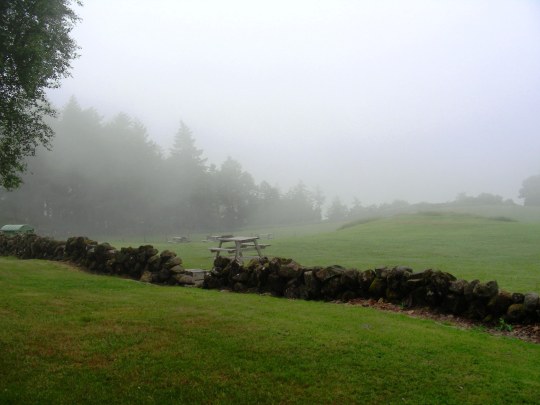



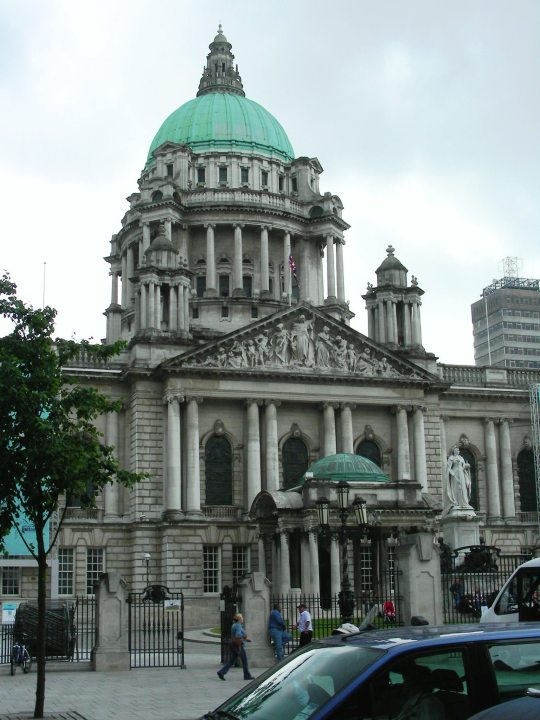
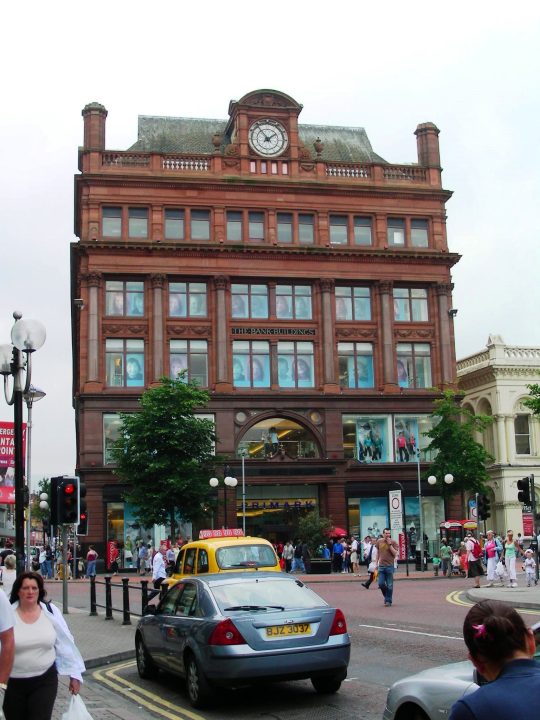










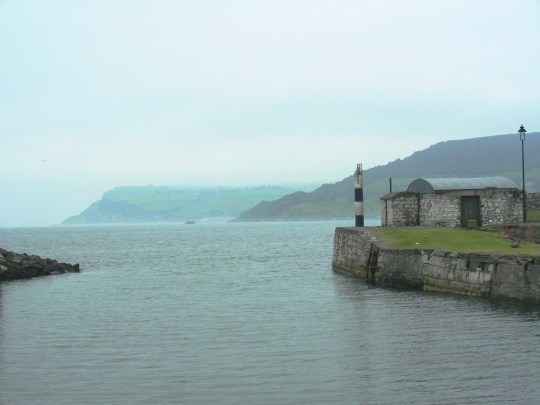


Northern Ireland ceased to be part of the Irish Free State on December 8, 1922.
#Northern Ireland#8 December 1922#anniversary#Irish history#landscape#travel#Carnlough#Carnlough Harbour#belfast#Albert Memorial Clock Tower#Glenariff Forest Park#great britain#united kingdom#summer fog#forest#Belfast City Hall#Bank Building#atlantic ocean#sea#coast#streetscene#summer 2006#vacation#cruise#original photography#tourist attraction#landmark#cityscape#architecture#seascape
8 notes
·
View notes
Text

8 notes
·
View notes
Text

7 March 2006 | Camilla, Duchess of Cornwall and Prince Charles, Prince of Wales arrive at Buckingham Palace for a State Banquet thrown by The Queen for the President of the Federal Republic of Brazil, His Excellency Mr Luiz Inacio da Silva and his wife Senhora Marisa Leticia Lula da Silva during their State Visit to the UK in London, England. The Brazilian couple are staying at the Brazilian Residence and Buckingham Palace during their stay as guests of HM The Queen. (c) Chris Jackson/Getty Images
#Prince Charles#Prince of Wales#King Charles III#Camilla#Duchess of Cornwall#Queen Camilla#Greville Tiara#Britain#tiara#2006#Chris Jackson#Getty Images
0 notes
Text
« If Mr. Trump continues to attempt to usurp the authority of the courts, the battle will be joined, and it will be up to the Supreme Court, Congress and the American people to step forward and say: Enough. As the Declaration of Independence said, referring to King George III of Britain, “A prince, whose character is thus marked by every act which may define a tyrant, is unfit to be the ruler of a free people.”
Mr. Trump appears to have forgotten that Americans fought the Revolutionary War to secure their independence from the British monarchy and establish a government of laws, not of men, so that Americans would never again be subject to the whims of a tyrannical king. »
— Retired conservative Federal Judge J. Michael Luttig writing in the New York Times (archived).
Judge Luttig served in the federal judiciary from 1991 to 2006. He cannot be described as a "Radical Left Lunatic" which is how The Orange One refers to any judge who rules against Trump's unconstitutional measures. Judge Luttig was appointed by President George H.W. Bush in 1991.
Trump seems eager to provoke a constitutional crisis. He is depending on slim GOP majorities in both chambers of Congress to back him up. Craven Republicans on Capitol Hill worry themselves shitless about Trump unleashing primary challengers against them. But federal judges are appointed for life and are not subject to such pressure.
Judge Luttig, albeit indirectly, considers Trump as "unfit to be the ruler of a free people". Well stated.
#donald trump#maga#republicans#the federal courts#the federal judiciary#constitutional crisis#separation of powers#tyrants#king george iii#j. michael luttig
255 notes
·
View notes
Text
FINISHED MORE OF THE LIVE ACTION MOVIES, I really liked take on Caesar the vibes are so COOL I redrew one of the shots but with their comic selve

THEYRE THE THINGS EVER
Though their outfits aren't exactly comic accurate omg I kinda love how they look on their cartoon selves
Og shot:

Also asterix doodle dump too:



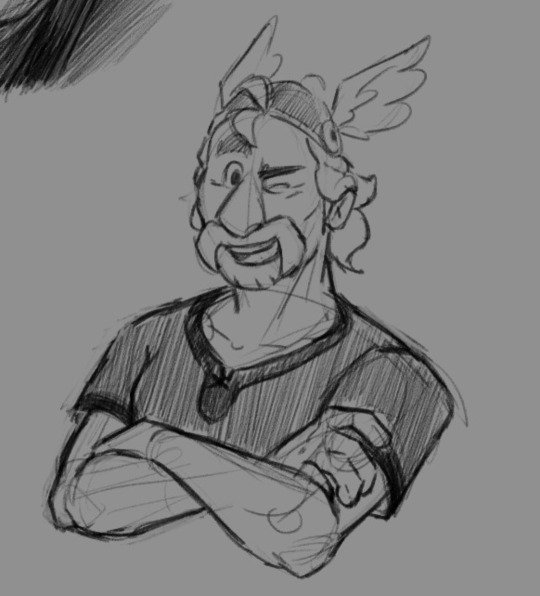
I may be cringe but I'm free
NEW RANKINGS OF THE MOVIES (in my opinion, I gave a few a quick rewatch and shuffled things around)
Asterix and the Vikings (2006)
Asterix: the secret of the magic potion (2018)
Asterix: the mansions of the Gods (2013)
Asterix & Obelix: Mission Cleopatra (2002)
Asterix vs Caesar (1985)
Asterix and cleopatra (1963)
The twelve tasks of Asterix (1976)
Asterix and Obelix Take on Caesar (1999)
Asterix in Britain (1986)
Asterix and the big fight (1989)
Asterix & Obelix: The Middle Kingdom (2023)
Asterix conquers America (1994)
Asterix the gaul (1967)
Asterix and Obelix: God Save Britannia (2012)
Fucked up my dawg nahhh

ALSO ALSO, I got interested whilst watching the movies and drafted up this
Not perfect but I like multiverses
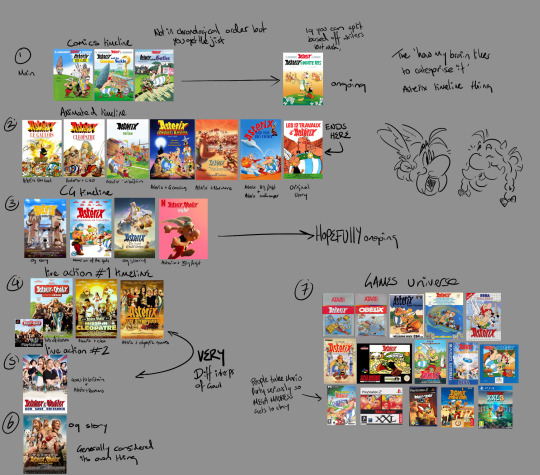
That's about it ^^
#art#asterix#astérix et obélix#astérix#obelix the gaul#asterix the gaul#obélix#Obelix#asterix x obelix#gaylois#digital art#sketch#doodles#meme redraw#screenshot redraw#I think its cute#im thinking of making a swap au but im not sure if i should go and make the duo evil cause ngl theyd be a menace#1999 LIVE ACTION VITALSTATS AND PEDAMENTA HAVE MY HEART#ily Asterix and Obelix#they make me happy
309 notes
·
View notes
Text
A chat with Lewis Hamilton
22 JUNE 2006
Lewis Hamilton's dominance in the GP2 series continued at Silverstone and took him ever closer to the tantalizing prospect of the young British driver jumping straight into a McLaren F1 seat next year.
The GP2 Championship leader captured the imagination of his home crowd as he romped to his second victory of the weekend, earning a standing ovation. After the race, fans were queuing up to give their congratulations, the praise always the same: "The Formula 1 was boring compared to you," as much a testament to F1's much more racing-friendly support series as to Hamilton's racing ability. However, there is no denying that Hamilton's breathtaking three abreast move on Clivio Piccione and championship rival Nelson Piquet, Jr. as they went into Becketts was a sign of raw talent, and one that made the home fans sit up and freshen up hopes of a new British star in F1.
Being in front of the adoring fans also whetted Hamilton's appetite for success.
"On the in-lap as I was coming in, I really could feel the buzz from the crowd; the amazing support," he says. "I couldn't hear the fans or anything but it just felt amazing, and you know they're all British, you can see all the flags. It's the best feeling to see that support, because usually you go to Europe and it's just not the same. They might cheer you on but it's nowhere near as immense as it is here."
Having dominated another round in GP2 and with Ron Dennis saying "There's no question that he'll be in F1 next season," the press is starting to think about the young Briton driving in F1 next year, especially as Jenson Button (who has been built up for so long) has yet to deliver the wins that they want. Hamilton says that he knew as early as during pre-season testing that racing in F1 in 2007 was a very real prospect:
"It wasn't that I was that confident but it was what I wanted to do. I knew that I had to win GP2 and dominate it as best as I can, like I did in Euro Formula 3 last year. Your results speak for themselves. Nico [Rosberg] and Heikki [Kovalainen] did it last season and if I can do it and do it better than them, then there's got to be a place for me in F1."
It could be said that Hamilton's strong finishes are a result of ART Grand Prix having the dominant car, but the second ART driver Alexandre Premat faired a lot better against Nico Rosberg last year than he has against the rookie Hamilton so far this season. When you consider also that Premat has much more experience in GP2 and that Rosberg has gone on to impress at Williams in F1, then the early signs suggest that Hamilton is ready for Formula 1. But will he hold out for a race drive?
"That's my goal, that's what I want. I am a racing driver. Testing doesn't really interest me, but if I didn't have an opportunity to race, a test seat on the Friday practice session would be perfect. That would be a good position to be in."
There's nothing wrong with starting out at a small team, like Fernando Alonso and Mark Webber did at Minardi. It allowed them to quietly get on with their business, away from any real expectation, and vitally they got to prove their ability, as any driver's pace is only ever judged by how they compare to their teammate. However, Hamilton is adamant that his aim is to drive at McLaren alongside the ever dominant and seemingly unbeatable Alonso. That would expose him at a time when he is learning. His argument, however, is that the stronger the teammate, the better it is for him.
Nothing seems to faze the 21 year old, and it appears his unique long-term relationship with McLaren-Mercedes that started when he was just twelve years old has given him an extraordinary inner belief, while high expectations have long ago taught him how to deal with pressure:
"They've had a major input into my career. Ron (Dennis) has paid very close attention to how I'm doing. He's not so much put pressure on me, but there is that pressure there as he wants me to succeed. He's proud, and I think he's quite emotionally involved in it, which is a good thing. He was out on the podium watching me today, and that's a great feeling. We've been friends and together for nine years now, so it's quite a long partnership considering I'm only 21. I just hope he gives me the opportunity to race for him next year."
Dennis has usually preferred to pay big fees for drivers, but he might be keen to show his rival, Sir Frank Williams, who was done very well out of taking chances on rookies-particularly Brits such as Damon Hill, David Coulthard, and Jenson Button-that he, too, can spot talent.
Williams has always enjoyed making champions out of drivers, where Dennis has gone for proven talent. Having secured the services of hottest property in Alonso, it seems like a very small risk to put a very talented youngster in the car next to him. His "emotional involvement," as Hamilton calls it, might just make him go with his heart on this one.
#lewis hamilton#f1#formula 1#flashback fic ref#flashback fic ref 2006#not a race#2006 not a race#between britain and france 2006#gp2#gp2 2006#tw nico
15 notes
·
View notes
Text
Eminem featuring Nate Dogg - 'Till I Collapse 2002
"'Till I Collapse" is a song by American rapper Eminem featuring American singer Nate Dogg, released from his fourth studio album The Eminem Show (2002). Despite never being released as a single, the song has managed to chart numerous times worldwide and was the most streamed non-single of all time on Spotify as of June 2022. In 2012, it was certified double-platinum by the Recording Industry Association of America for selling 2,000,000 copies in the US. This was followed by quintuple-platinum in 2018 and octuple-platinum in 2022.
When Eminem's single "Shake That" (also featuring Nate Dogg) was released in 2006, several Eminem songs re-charted that same week, including "'Till I Collapse". It charted in the UK at number 192 on April 15, 2006. In 2009, it was used in an advertisement for the game Call of Duty: Modern Warfare 2. It raised digital download sales of the song worldwide considerably, but in Britain the song sold so many copies after the ad aired that it re-charted at number 73, a new peak.
"'Till I Collapse" received a total of 63,7% yes votes! Previous Eminem polls: #27 "Rabbit Run".
youtube
550 notes
·
View notes
Text
𝗠𝗼𝗿𝗲 𝗞𝗲𝘁𝘂-𝗿𝗲𝗹𝗮𝘁𝗲𝗱 𝘁𝗵𝗲𝗺𝗲𝘀 𝗶𝗻 𝘁𝗵𝗲 𝗠𝗲𝗱𝗶𝗮
warnings: mentions of drug abuse and suicide.
𝘛𝘩𝘦 𝘊𝘰𝘷𝘦𝘯𝘢𝘯𝘵 (2006)
A Ketu film related to one's roots, ancestry, heirdom, and hunger for power. All themes which I have touched on to be Ketu, and will be further exploring in the future.
It stars Magha Moon Steven Strait as the protagonist and Mula ASC Sebastian Stan as the antagonist.
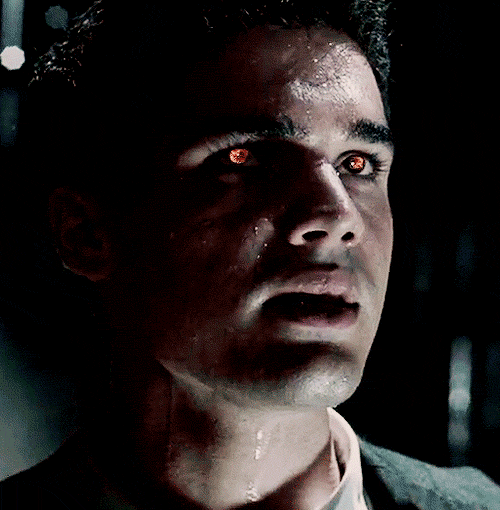

Magha Moon Steven Strait plays Caleb who is grappling with the legacy of his ancestors. He is the leader of the covenant.
Sebastian Stan portrays the power hungry force who wants to will the power of the covenant's members. The other characters are portrayed by Moon nakshatra natives. All of them are warlocks who have supernatural powers inherited from their powerful ancestors. Sebastian Stan's character is “a teenage warlock who is the descendant of the long-banished fifth family of witches from the Ipswich Colony, who formed a covenant of silence to protect them.”
Rohini Sun, Mula Moon Toby Hemingway & Rohini Moon Taylor Kitsch play the other members of the covenant.
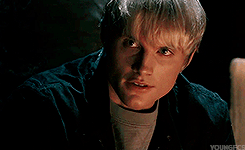

Moon nakshatras, along with Ketu nakshatras, are constantly seen in witch roles; such as almost the entire witch cast of AHS: Coven being portrayed by Ketu nakshatra natives!!!
𝘒𝘪𝘯𝘨 𝘰𝘧 𝘵𝘩𝘦 𝘎𝘺𝘱𝘴𝘪𝘦𝘴 (1978)
Another Ketu film about one's ancestry roots and their pressure around legacy – this time starring an Ashwini native.
The story follows Dave, played by Ashwini Sun Eric Roberts, the grandson of a powerful clan leader.

The Stepanowicz family represents a deep connection to Romani traditions and their way of life, emphasizing the importance of lineage and cultural identity. The clan leader, recognizing the importance of preserving their traditions, seeks to pass on his leadership role to his Ashwini grandson who he deems worthy.
𝘚𝘩𝘢𝘯𝘨-𝘊𝘩𝘪 𝘢𝘯𝘥 𝘵𝘩𝘦 𝘓𝘦𝘨𝘦𝘯𝘥 𝘰𝘧 𝘵𝘩𝘦 𝘛𝘦𝘯 𝘙𝘪𝘯𝘨𝘴 (2021)
In this film, the Ketu native is depicted as running away from his roots, meaning to forge a new life separate from his past. Shang-Chi is played by Ashwini Sun Simu Liu. And his father is a powerful leader of the Ten Rings terrorist organization.
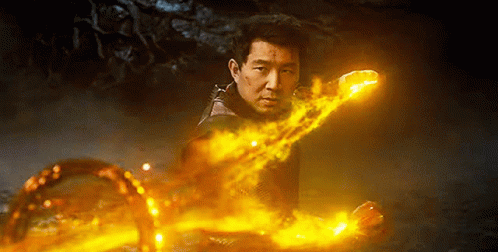
Instead of Shang-Chi rejecting his roots entirely, he learns to embrace his strength, face his past and accept his lineage, choosing to redefine it on his own terms.
𝘈𝘳𝘵𝘩𝘶𝘳 𝘗𝘦𝘯𝘥𝘳𝘢𝘨𝘰𝘯 𝘪𝘯 𝘚𝘩𝘳𝘦𝘬 𝘵𝘩𝘦 𝘛𝘩𝘪𝘳𝘥 (2007)
When the King of Far, Far Away dies, Arthur Pendragon learns that he is next in line to the throne. But he doesn't want to rule, as he lacks the confidence and fears he isn't capable of being a king. But due to his roots, though unknown, he has no choice. He is voiced by Magha ASC, Mula Moon Justin Timberlake.
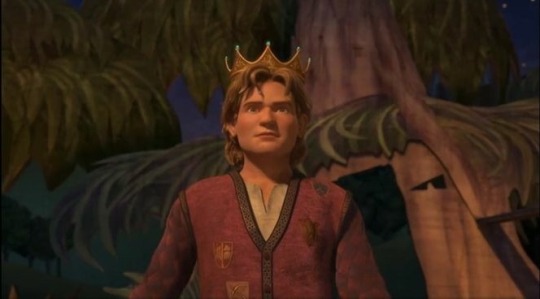
According to legends, King Arthur Pendragon is a folk hero who ruled Britain. I find it so f*cking awesome that he has been portrayed by Ketu natives through movies/TV shows. And being already voiced by Justin Timberlake, who is especially Magha Ascendant, validates my other observations even more of this heirdom theme in Ketu nakshatras. It really all started with my The Spoiled Brat Archetype post, which turned to providing more old money character examples. Now, Magha nakshatra is literally symbolized by a throne, representing heirdom, authority, power, and especially ancestral lineage.
Magha Moon Clive Owen portrays Arthur Pendragon in the film King Arthur (2004) while possible Mula Moon Bradley James plays the folk hero in the show Merlin.
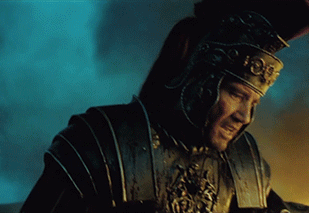
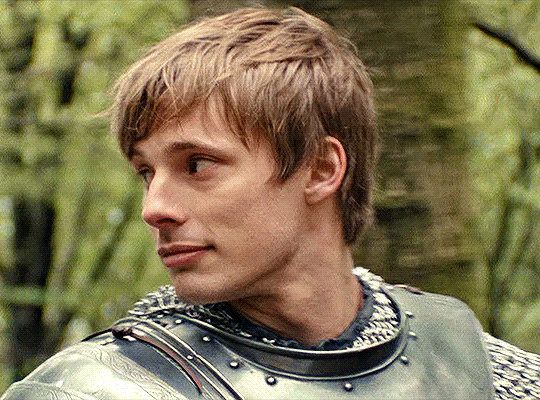
Mula ASC Alexandre Astier plays King Arthur in the show Kaamelott. And then Mula ASC Graham Chapman is King Arthur in the film Monty Python and the Holy Grail.
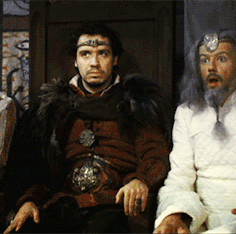

Ashwini Moon Iain De Caestecker is King Arthur in the series The Winter King. Mula ASC Boris Karloff played King Arthur in the video production of A Connecticut Yankee in King Arthur's Court.
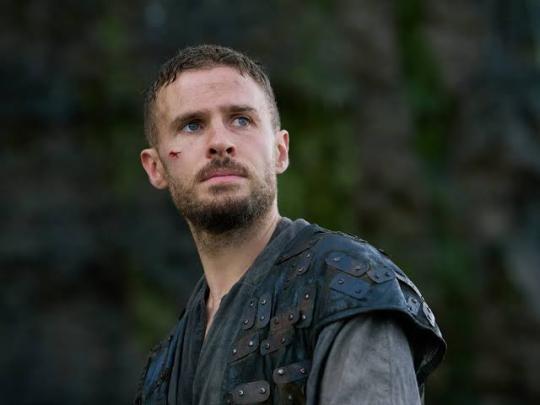

Ashwini Moon Sean Patrick Flanery is King Arthur in the show Guinevere. Magha Sun Mel Ferrer played King Arthur in Knights of the Round Table. Mula ASC Kenneth More is King Arthur in the film Unidentified Flying Oddball. Mula Moon James Faulkner is King Arthur in the mini series "Wizards" Battle Royal.
Also, in the series Succession, the character Kendall Roy is pretty much the heir to the media empire of his powerful father. He is portrayed by Mula Sun Jeremy Strong.

In the series Royal Pains, Mula Moon Andrew McCarthy plays Marshall Bryant who is the heir to the blender fortune. While Ashwini ASC Ezra Miller plays his son, Tucker Bryant, now the great-grandson of the inventor of the blender.
I talk more about their dynamic with Rahuvians in this post, and it's interesting how they interact.
While Rahuvians struggle with Maya while they rise in power, Ketuvians struggle more internally. The trope of the rich kid who struggles with extreme mental issues or drug abuse tends to be Ketuvian. In the film The Gentleman (2019), Ashwini ASC Eliot Sumner plays Laura Pressfield who comes from old money. Laura struggles with drug abuse and wants to escape from the culture. In the series Political Animals, Mula ASC Sebastian Stan plays T.J. Hammond who is the first openly gay child of a U.S. president, struggling with drugs and alcohol as a way to numb himself. In the film Franklyn, Magha ASC and Ashwini Moon Eva Green plays Emilia Bryant who comes from a wealthy family but is an unstable artist who has deep emotional struggles which lead to her suicide. In the film American Psycho, Ashwini Moon Christian Bale plays Patrick Bateman who comes from wealth but he is deeply mentally ill and internally miserable. In the series Succession, Mula Sun Jeremy Armstrong plays Kendall Roy who comes from wealth but he suffers from drug addiction. In the Spanish series Elite, Ashwini Moon María Pedraza plays Marina Osuna who is top in her class and is from an extremely wealthy family — yet she is deeply troubled, ill and spirals out of control, going against her family. In the Indian version of this series, Class, Ashwini Moon Anjali Sivaraman plays the same character. In the film Cruel Intentions, Ashwini Sun Sarah Michelle Gellar plays Kathryn Merteuil who is another Ketuvian rich kid with a drug addiction. Magha Sun Amy Adams played the same character in Cruel Intentions 2; and in the 2024 series remake of the story, Ashwini Sun Sarah Catherine Hook plays the same character but with a different name, Caroline Merteuil.

158 notes
·
View notes
Text

Let's remember the timeline of Gaza:
1516 - Ottomans rule Gaza
1917 - Britain takes control
1947 - UN proposes Arab state alongside Jewish state. Arabs reject it and attack the Jews.
1948 - Egypt takes control
1948-1967 - Gaza becomes a terror hub
1967 - Israel takes control
1994 - Israel grants Arabs autonomy over Gaza
2000-2005 - Gaza becomes center for brutal violence and terrorism leading Israel to build a barrier around Gaza and impose blockades.
2005 - Israel leaves Gaza, offers path to self-governance
2006 - Gaza elects Hamas as leader
2007 - Hamas takes full control over Gaza and begins attacking Israel. Israel imposes complete blockade. Hamas makes "destruction of Israel" the primary goal of Gaza.
2008-2009 - War
2009-2014 - Years of violence
2014 - War
2014-2023 - Violence
2023 - Hamas and Gazans invade Israel
2023-2025 War
2025: End of Gaza
At no point did these people ever work toward peace.
@ApostateProphet
115 notes
·
View notes
Text
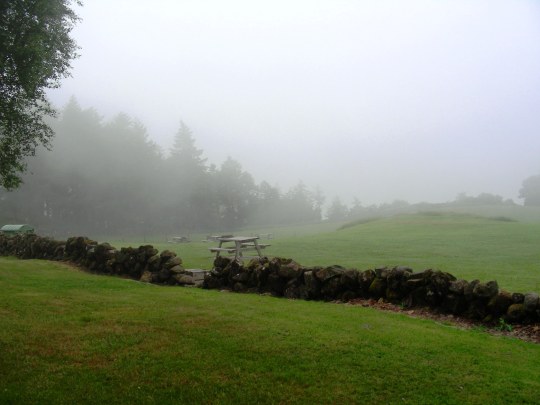

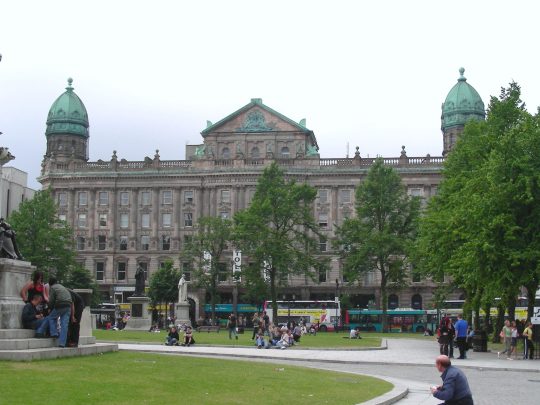



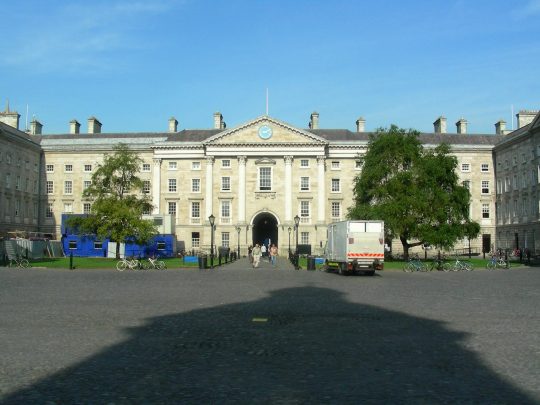
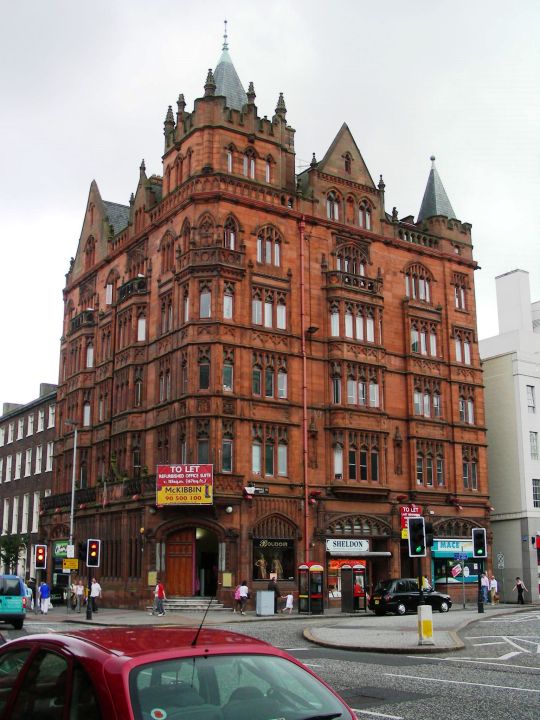

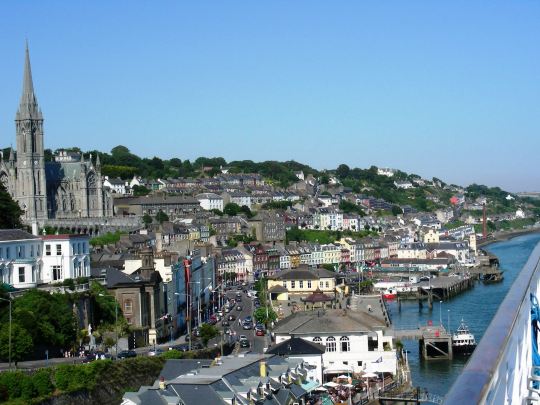
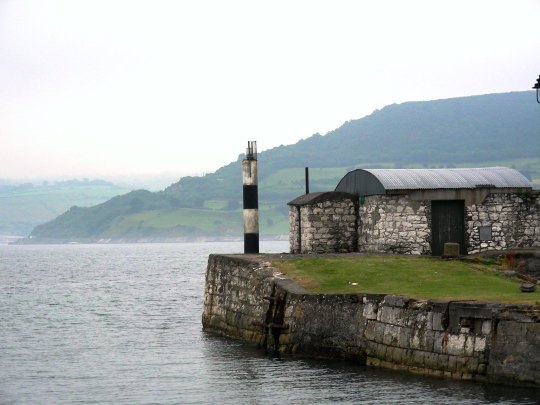
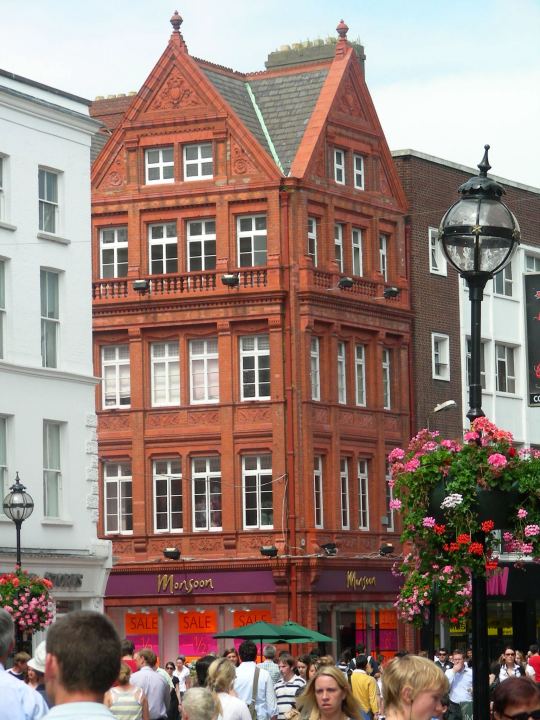

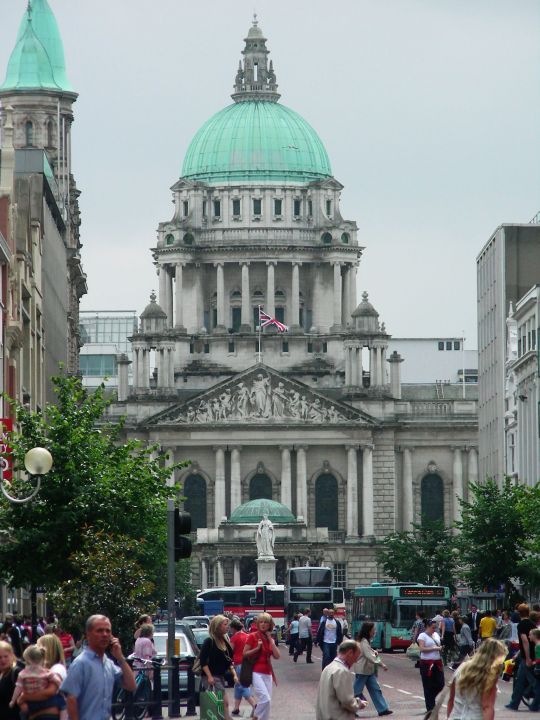
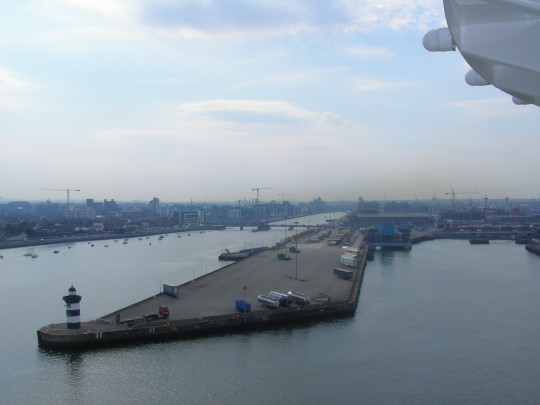
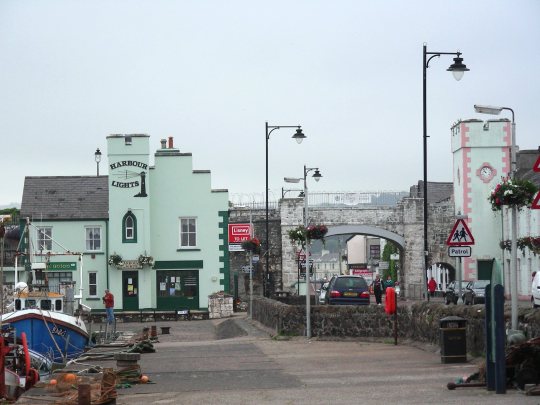

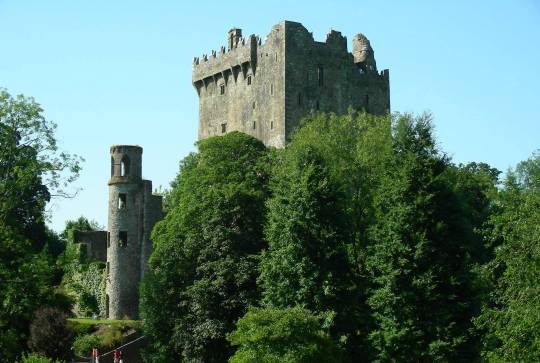


The Partition of Ireland on May 3, 1921: The Government of Ireland Act 1920 is passed, dividing Ireland into Northern Ireland and Southern Ireland.
#Partition of Ireland#Government of Ireland Act 1920#Northern Ireland#Southern Ireland.#Ireland#Blarney Castle#United Kingdom#Great Britain#Trinity College#Dublin#Cathedral Church of St Colman#landscape#cityscape#St Colman's Cathedral#Carnlough Harbour#Glenariff Forest Park#Carnlough#Belfast City Hall#street scene#Albert Memorial Clock Tower#summer 2006#travel#photography#original photography#vacation#tourist attraction#landmark#architecture#anniversary#Irish history
3 notes
·
View notes
Note
hi i love your blog and the stuff you've shared has been really invaluable for me writing my dissertation right now! i was wondering if you've ever read anything interesting about police horses, or perhaps horses working for the state more generally? apologies if you've already made a post about this and i've missed it.
Nice. Don't know if your dissertation is specifically about horse histories; if so, then I'd imagine you already know much more than I do. So I don't know how much help I can be.
I've posted about the history of police horses in Australia before, which is just excerpts from Stephen Gapps and Mina Murray, in their "From colonial cavalry to mounted police: a short history of the Australian police horse" (The Conversation, 28 July 2021; "Horse Patrol" aka "Mounted Police" formally established 1825 after Wiradjuri war, used to round-up escaped laborers and attack Aboriginal communities as crucial force in colonial admin in 1830s culminating in Waterloo Creek Massacre.)
I've made some references to US participation in British campaigns of Boer War. (Apparently there was a micro-industry of the New Orleans port shipping 110,000 horses and 81,000 mules on 166 voyages via 65 British steamships for a cost of like hundreds of thousands USD per month for three years to help Britain.)
Similarly, Steve Hewitt and others write about Canadian mounted police and their role in national power in the Great Plains; twentieth-century counter-subversion; monitoring labor strikes and Indigenous/student dissent, etc.
"The Masculine Mountie: The Royal Canadian Mounted Police as a Male Institution, 1914-1939" (Hewitt, Journal of the Canadian Historical Association, 1996)
Riding to the Rescue: The Transformation of the RCMP in Alberta and Saskatchewan, 1914-1939 (Hewitt, 2006)
"Fashioning farmers: ideology, agricultural knowledge and the Manitoba farm movement, 1890-1925" (Hewitt, Journal of Canadian Studies, 1997)
"Canadianizing the West: The North-West Mounted Police as Agents of the National Policy, 1873-1905" (Mcleod, The Prairie West: Historical Readings, edited by Francis and Palmer, 1992)
---
Guessing you've already considered this, but a relevant thing I've read might be Breeds of Empire: The 'Invention' of the Horse in Southeast Asia and Southern Africa 1500-1950 (Greg Bankoff and Sandra Swart, 2007), about "the 'invention' of specific breeds of horse in the context of imperial design and colonial trade routes" and "the historiographical and methodological problems with writing a more species or horse-centric history." There was an earlier influential paper about imperial use of horses by Swart, ""The World the Horses Made": A South African Case Study of Writing Animals into Social History" (International Review of Social History 55:2, 2010).
Last year I read Bellweather Histories: Animals, Humans, and US Environments in Crisis (edited by Susan Nance and Jennifer Marks, 2023), and there was an interesting chapter on horses by Marks: "Chicago's 1872 Equine Influenza Epizootic and the Evolution of Urban Transit Technology."
---
Have you seen Jagjeet Lally's "Empires and Equines: The Horse in Art and Exchange in South Asia, ca. 1600-1850" (Comparative Studies of South Asia, Africa and the Middle East, 35:1, 2015)? It covers Mughal state power and aristocratic prestige as tied to horses, but also refers to the later utility of horseback mobility in East India Company and British power consolidation.
I used to be in a Central Asia-specific program-type thing and there was a long list of academic writing, most if it not in English, about horses as essential for statecraft in Mongol, Persian, Mughal, Chinese, and Ottoman contexts. So I know that there's a huge amount of writing on the subject, but I did not retain much of it. Jagjeet Lally's bibliography here is helpful. This also brings to mind Alan Mikhail's work The Animal in Ottoman Egypt (2013) and Under Osman's Tree: The Ottoman Empire, Egypt, and Environmental History (2017). Though horses aren't the main focus, they're essentially about "animal labor/capital."
---
I think I've seen that you've interacted with my old posts about Sujit Sivasundaram, Rohan Deb Roy, and Jonathan Saha on "interspecies empire"? Saha's most recent stuff includes writing in:
Biocultural Empire: New Histories of Imperial Lifeworlds (2024); Colonial Dimensions of the Global Wildlife Trade (2024); "A Historiography of Great Animal Massacres" (2024); "whiteness, masculinity, and ambivalent British Justice"; imperial use of elephants and "animal agency, undead capital, and imperial science" (2017); Subverting Empire: Deviance and Disorder in the British Colonial World (2015); imperial use of cattle and other livestock in "animals and the politics of colonial sensitibilites" (2015). Sivasundaram covers a lot of that (animality, criminality, imperial imaginaries) but also oceanic thinking.
---
Also thinking of:
The Horse in the City: Living Machines in the Nineteenth Century (Clay McShane and Joel A. Tarr, 2011)
And The Herds Shot Round the World: Native Breeds and the British Empire, 1800-1900 (Rebecca JH Woods, 2017). Though its not really about horses (mostly about sheep and cattle for dairy/meat).
---
But I know there are little niches:
(1) British frontier policing in Australia ("mounted patrols" in campaigns against Aboriginal peoples and keeping them on rangeland labor sites). (2) British metropolitan and urban settings (police horses in industrializing London, patrolling rural periphery during enclosure law era). (3) The settlement of the Great Plains of the US (especially origins of Rangers, the Fence Wars, and policing West Texas). (4) The Spanish colonization of Mexico and especially the Rio Grande Valley (horses in maintaining state power on the northern/desert frontiers; Spanish/Mexican states and Comanche/Apache mobility in southern Great Plains). (5) Argentina's state-building in the Chaco. (6) And then all of that material about Mughal, Mongol, Ottoman horses.
(Also, most recently, I did that annoying silly satirical retelling of horse-drawn sleighs as progenitor of vehicle and pedestrian laws in industrializing Amsterdam, and it alludes to how horse-drawn carriages were important affordances to wealthy aristocrats which shaped industrial urban space in Europe; I don't know much about it, but I know there's a fair amount of lit about both horses-as-vehicles and mounted police in early nineteenth-century Europe.)
Though I'm not really familiar with most of that. In trying to formulate thoughts about "carceral archipelagoes" and "frontiers," I've previously seen titles about the utility of telegraphs, railyards, and police for US power consolidation. But when horses/cattle get involved, I've been scared/disturbed by just how much of that literature seems to be directly produced by "police department museums," "police science" journals, or former police-superintendents-turned-pseudo-historians in their retirement years who study their own noble profession as a novel curiosity.
But I imagine you know better than me if this is true. So please put me back in my place if I've got the wrong impression!
It's my impression that, more recently, the advent of critical animal studies, multispecies ethnography, and critical geography has meant there's a lot of new stuff to check out.
#edited tag to add yea someone in rbs mentioned ann greenes Horses At Work Harnessing Power in Industrial America#horses a kinda unique case i think because while critical animal studies stuff on less charismatic creatures often explicitly is also about#colonial history the lit on horses is also flooded with like less rigorous stuff publicized by equestrians or ranching adjacent sponsors
71 notes
·
View notes